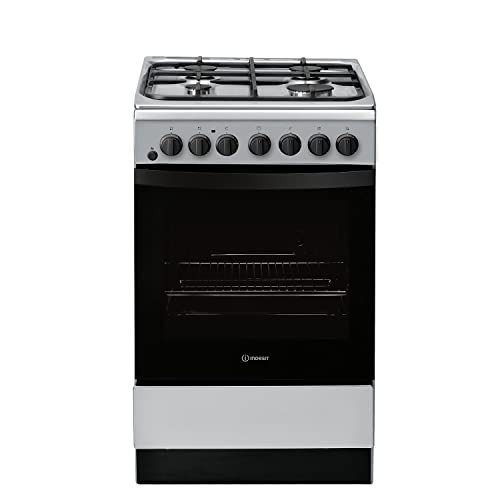15 Reasons Not To Overlook Oven And Hob

Understanding Kitchen Ovens and Hobs: A Comprehensive Guide
The kitchen is often described as the heart of the home, and for great factor. It is where families come together, meals are prepared, and memories are created. Central to this cooking sanctuary are two important home appliances: the kitchen oven and the hob. Understanding their functions, types, and performances is crucial for effective cooking and can significantly improve a home chef's experience. Hobs Sale will explore the world of kitchen ovens and hobs, analyzing their various types, benefits, and pointers for making notified choices.
Tabulation
- Introduction to Kitchen Ovens
- Types of Ovens
- Conventional Ovens
- Convection Ovens
- Microwave Ovens
- Steam Ovens
- Understanding Hobs
- Types of Hobs
- Gas Hobs
- Electric Hobs
- Induction Hobs
- Benefits of Using Ovens and Hobs
- Choosing the Right Oven and Hob for Your Kitchen
- Upkeep Tips for Ovens and Hobs
- Frequently asked questions
- Conclusion
1. Intro to Kitchen Ovens
Ovens are important appliances in modern-day cooking areas. They supply a regulated environment for baking, roasting, and broiling food. With various styles and functionalities, choosing the right oven can considerably impact cooking times, food texture, and flavor.
2. Types of Ovens
Conventional Ovens
Conventional ovens are the most typical type found in homes. They use either electric or gas power to heat up the interior and usually feature a single cooking area.
Benefits:
- Versatile for baking, roasting, and broiling.
- Generally inexpensive.
Convection Ovens
Stove are comparable to conventional ovens but come geared up with a fan that flows hot air throughout the cooking chamber. This results in even cooking and browning.
Advantages:
- Reduced cooking times due to improved airflow.
- Enhanced browning and crisping of foods.
Microwave Ovens
Microwave use electro-magnetic radiation to heat food rapidly, making them hassle-free for defrosting and reheating leftovers.
Benefits:
- Very quick cooking times.
- Energy effective.
Steam Ovens
Steam ovens utilize steam to cook, maintaining the moisture and nutrients in food. They are particularly popular among health-conscious cooks.
Advantages:
- Healthier cooking option.
- Keeps minerals and vitamins in food.
3. Understanding Hobs
Hobs, also referred to as cooktops, are the flat surfaces on which pots and pans are positioned to cook food. They can be integrated into kitchen counter tops and are available in various designs, fuel types, and styles.
4. Types of Hobs
Gas Hobs
Gas hobs utilize gas burners as their heat source, using instant heat and exact temperature level control.
Advantages:
- Excellent control over cooking heat.
- Usually less expensive to run than electric ones.
Electric Hobs
Electric hobs heat utilizing electric coils or glass surface areas. They might take longer to heat up than gas, but they provide a smooth cooking surface area and are easier to clean.
Benefits:
- Even heat distribution.
- Safe, as there's no open flame.
Induction Hobs
Induction hobs utilize electromagnetic energy to straight heat up pots and pans. They need suitable cookware and deal instant responsiveness.
Advantages:
- Highly energy-efficient.
- Faster cooking times and precise temperature control.
5. Benefits of Using Ovens and Hobs
Both ovens and hobs come with their own unique set of benefits that can improve any cooking experience. Here are a few crucial benefits:
- Diverse Cooking Options: Both home appliances enable a series of cooking approaches including boiling, frying, roasting, baking, and steaming.
- Time Efficiency: Modern ovens and hobs frequently feature quick cooking settings, which conserve time in the kitchen.
- Accuracy Cooking: With sophisticated functions, users can attain better results in temperature level control and cooking times.
6. Choosing the Right Oven and Hob for Your Kitchen
When picking the right oven and hob, various aspects must be thought about:
- Size: Ensure that the device fits comfortably in your kitchen area.
- Cooking Style: Consider what types of food you often prepare.
- Fuel Type: Whether gas or electric, think about accessibility and effectiveness in your area.
- Budget: Determine your spending plan and find devices that fulfill your needs within that range.
Checklist for Choosing Your Oven and Hob:
- Assess kitchen area.
- Identify your cooking preferences.
- Determine source of power schedule.
- Compare functions and requirements.
- Set a spending plan range.
7. Upkeep Tips for Ovens and Hobs
Routine upkeep is important for keeping ovens and hobs in optimum condition. Here are some maintenance suggestions:
- Clean Regularly: Wipe down surfaces after each usage and deep tidy regularly.
- Inspect Seals: For ovens, check door seals to guarantee they are airtight.
- Analyze Burners: For gas hobs, keep burners devoid of food particles to maintain reliable heating.
- Replace Filters: If your oven has a filter, replace it as suggested by the manufacturer.
8. Frequently asked questions
1. What is the difference between a conventional oven and a convection oven?Conventional ovens
cook food through radiant heat, while stove circulate hot air, resulting in faster and more even cooking. 2. Do induction hobs need unique cookware?Yes,
induction hobs require ferrous cookware that can being allured to work efficiently. 3. Are steam ovens worth the investment?For health-conscious people or those who frequently cook veggies and delicate foods, steam ovens can be worth the financial investment
due to their capability to keep nutrients. 4. Can I combine an oven and hob into one unit?Yes, numerous makers provide combined systems referred to as variety cookers, which incorporate both an oven
and hob into a single appliance. 9. Conclusion Kitchen ovens and hobs are crucial components of any cooking space, each offering distinct features and performances fit for different cooking designs.
By understanding the
types of ovens and hobs readily available, their advantages, and how to preserve them, home chefs can cultivate a more effective and satisfying cooking experience. Whether one is an experienced cook or a beginner, making informed choices about these necessary kitchen home appliances is important.

